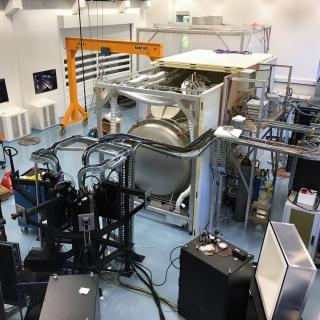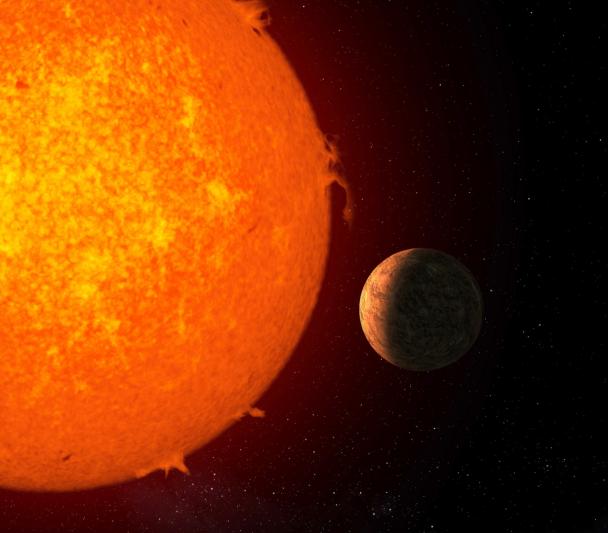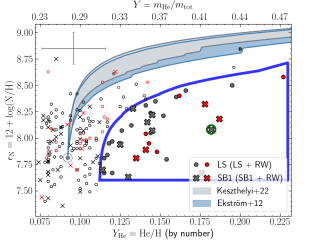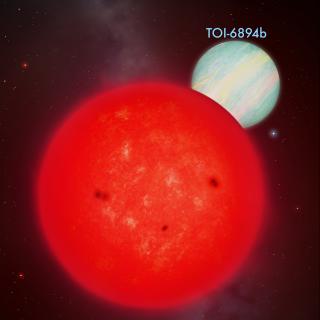An international team, in which researchers from the Instituto de Astrofísica de Canarias participated, as well as institutions in Spain, Italy, Portugal, Switzerland and the European Southern Observatory (ESO) has confirmed the presence of the extrasolar planet Proxima b using measurements of radial velocity with the ESPRESSO spectrograph, on the Very Large Telescope (VLT) in Chile.
The study, led by IAC researcher Alejandro Suárez Mascareño, shows clear evidence of the planet Proxima b, discovered four years ago orbiting the nearest star to the Sun, Proxima Centauri. Back then, a team led by researcher Guillem Anglada-Escudé measured a perturbation in the radial velocity of the star of little more than 1 meter per second, close to the limit of precision of the instruments at the time. It was a candidate exoplanet with a mass similar to that of the Earth, and within the habitability zone of its star. The confirmation was made using radial velocity measurements with the new ESPRESSO instrument, the most precise spectrograph built until now.
ESPRESSO has obtained measurements of radial velocity of the star Proxima Centauri with a precision of 30 cm/s. This is four times better than the precision obtained with HARPS, the instrument used for the detection. Combining this precision with the flux of photons which can be collected with the Very Large Telescope (VLT) on which it is installed, it opens the door to the discovery of the population of terrestrial planets (even those with masses much less than that of the Earth) around stars in the solar neighborhood. “ESPRESSO has shown that it can do better than any previous spectrograph”, comments Alejandro Suárez Mascareño, the first author of the paper. “A new scenario is opening up. Until now we have been restricted to the discovery of planets with masses several times that of the Earth, or at the limit with a mass about one Earth mass, orbiting cool stars. With ESPRESSO that limitation is gone”.
The unique precision of ESPRESSO has needed a major engineering effort by an international consortium which built it, involving institutions such as the University of Geneva (Switzerland), the Instituto de Astrofísica e Ciências do Espaço (U. Porto and U. Lisboa, Portugal), the National Institute of Astrophysics (INAF, Italy), and the European Southern Observatory (ESO). At the IAC, one of the institutions which co-directs the project, several of the opto-mechanical components of the spectrograph have been developed. The new observations enable a much clearer and faster detection than that originally published, refine our knowledge of the physical parameters of the planet, and rule out that the origin of the signal could be caused by stellar effect or the systematic effects of the instruments of the previous generation.
“It was an important task to confirm Proxima B”, says Jonay González Hernández, an IAC researcher and a coauthor of the publication. “It is one of the most interesting planets known in the solar neighbourhood. Its mass, similar to the Earth’s, the possibility that it could host life, and its proximity, make into one of the ideal candidates to search for biomarkers using the next generation of telescopes, such as the HIRES spectrograph for the future 39 m ELT, in whose construction the IAC is participating”.
Along with Proxima b, the team also found indications of a second signal in the data, whose origin has not yet been clearly established. “If it does turn out to be the sign of a planet, that could have a mass less than one third the mass of the Earth”, explains Rafael Rebolo, director of the IAC and co-director of the ESPRESSO project, The results of this study contribute to clarify the conditions in the planetary system nearest to the Earth and have been accepted for publication in the journal Astronomy & Astrophysics.
As well as the researchers Alejandro Suárez Mascareño, Jonay González Hernández and Rafael Rebolo López, members of the IAC who have also contributed to this publication are Felipe Murgas, Carlos Allende Prieto, Manuel Amate, Ana Belén Fragoso, Ricardo Génova Santos, Enric Pallé, José Luis Rasilla, Samuel Santana Tschudi and Fabio Tenegi Sanginés.
Scientific article: A. Suárez Mascareño et al. "Revisiting Proxima with ESPRESSO", Astronomy & Astrophysics, May 25, 2020. https://arxiv.org/abs/2005.12114
Contacto en el IAC:
Alejandro Suárez Mascareño: asm [at] iac.es (asm[at]iac[dot]es)








